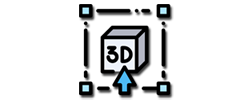Blender is a powerful 3D modeling software that enables designers to create stunning digital art. One of the key features that makes Blender so versatile is its materials and textures tools, which allow users to apply realistic surfaces and finishes to their models. In this comprehensive guide, we'll explore everything you need to know to master Blender's materials and textures tools and create realistic, high-quality 3D designs.
Materials and Textures Overview:
Before we dive into the specific tools and commands, let's first take a high-level look at the role of materials and textures in 3D design. Materials are the surface properties of an object, such as its color, reflectivity, and transparency. Textures, on the other hand, are the patterns or images applied to the surface of an object to create a more realistic appearance.
Getting Started:
To start working with materials and textures in Blender, you'll need to first create or import a 3D model. Once you have your model, you can begin applying materials and textures to it. Blender offers a wide variety of tools and commands for creating, editing, and manipulating materials and textures, including:
- Material Properties: This tool allows you to control the overall properties of a material, such as its color, reflectivity, and transparency.
- Texture Properties: This tool allows you to control the properties of a texture, such as its scale, rotation, and position.
- UV Mapping: This tool allows you to create a 2D representation of your 3D model, which can be used to accurately apply textures to specific areas of the model.
- Nodes: This tool allows you to create complex material and texture effects by combining multiple nodes together.
Advanced Techniques:
Once you've mastered the basics of materials and textures in Blender, you can begin exploring more advanced techniques to create even more realistic designs. Some of these techniques include:
- Procedural Textures: This technique involves using mathematical algorithms to generate textures, rather than relying on pre-made images.
- Texture Painting: This technique allows you to paint textures directly onto your 3D model using Blender's built-in painting tools.
- Texture Baking: This technique involves baking the textures of a high-resolution model onto a lower-resolution version of the same model, resulting in a more efficient workflow.
Conclusion:
Blender's materials and textures tools offer a wide range of possibilities for 3D designers looking to create realistic and visually striking digital art. By mastering the tools and techniques outlined in this guide, you'll be well on your way to creating stunning 3D designs that are sure to impress.






